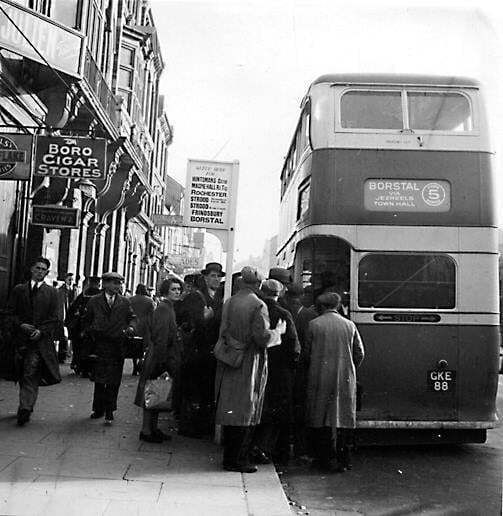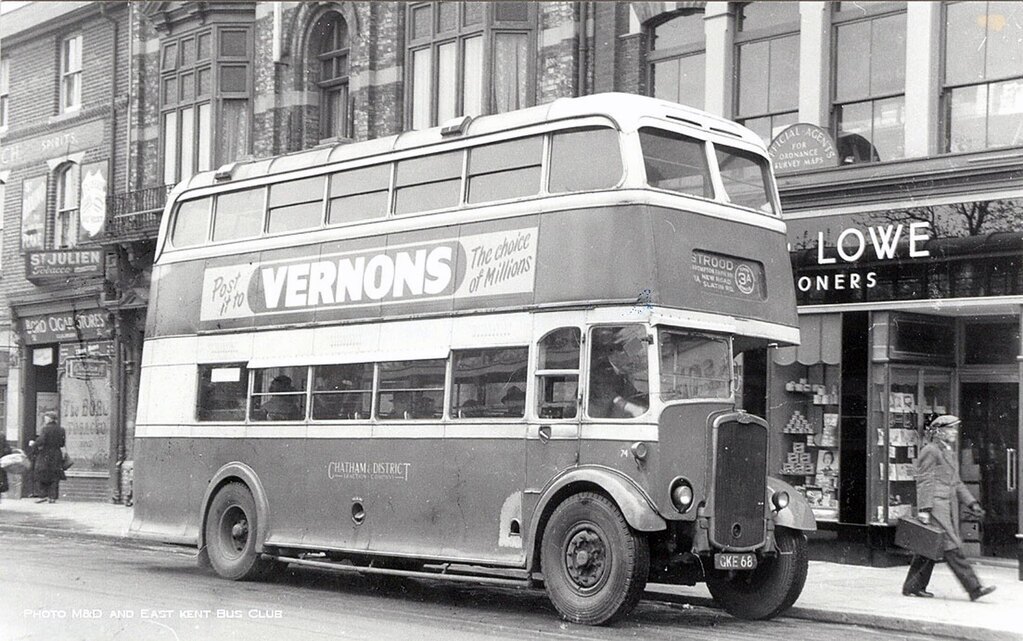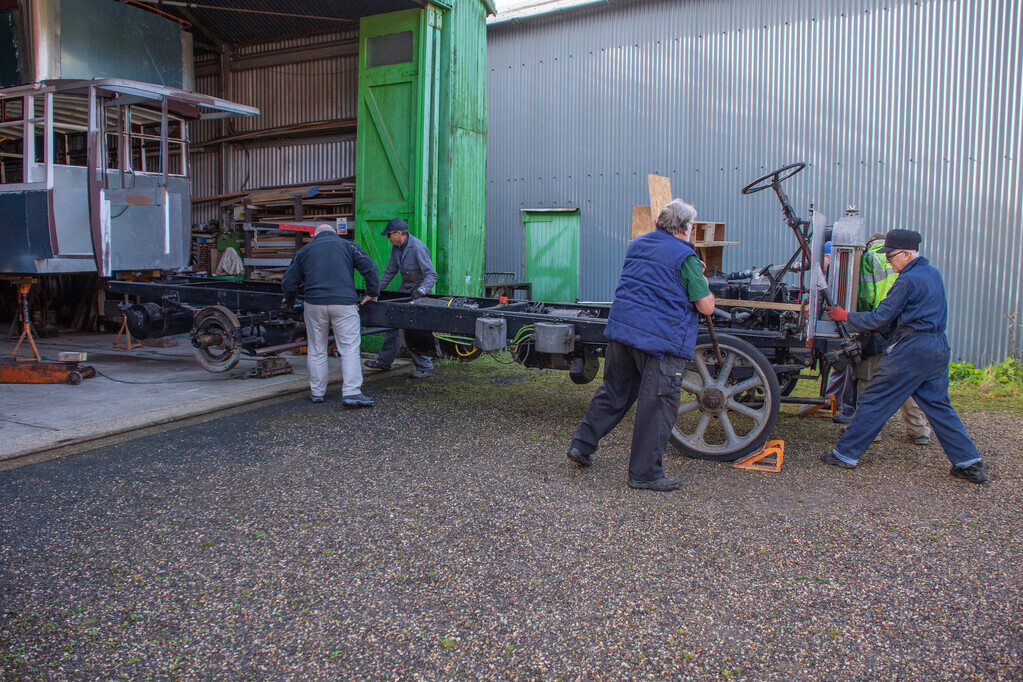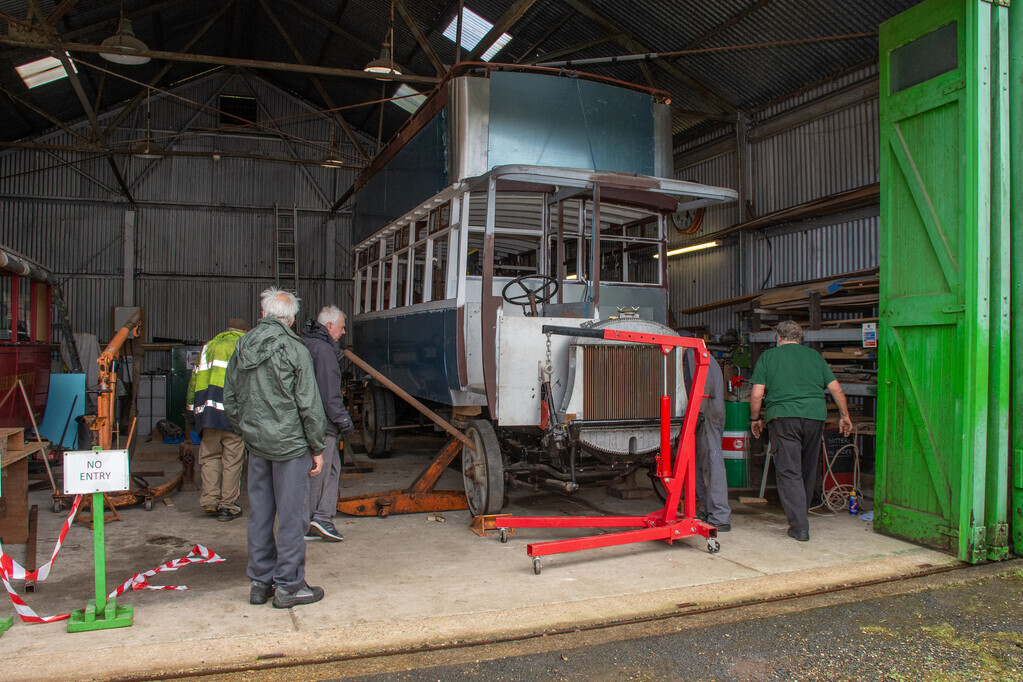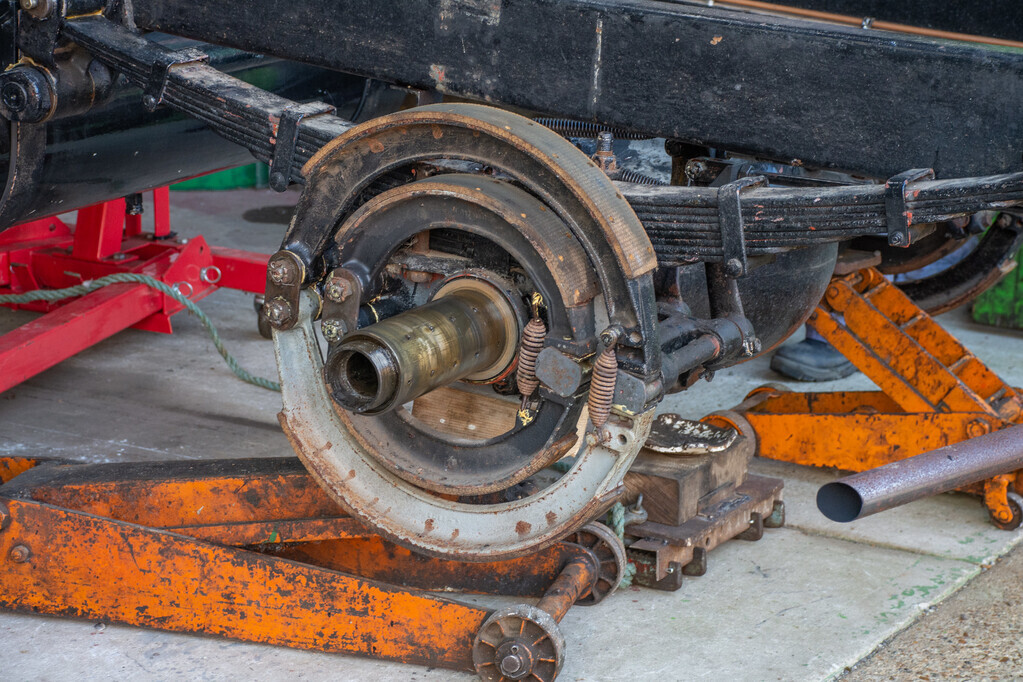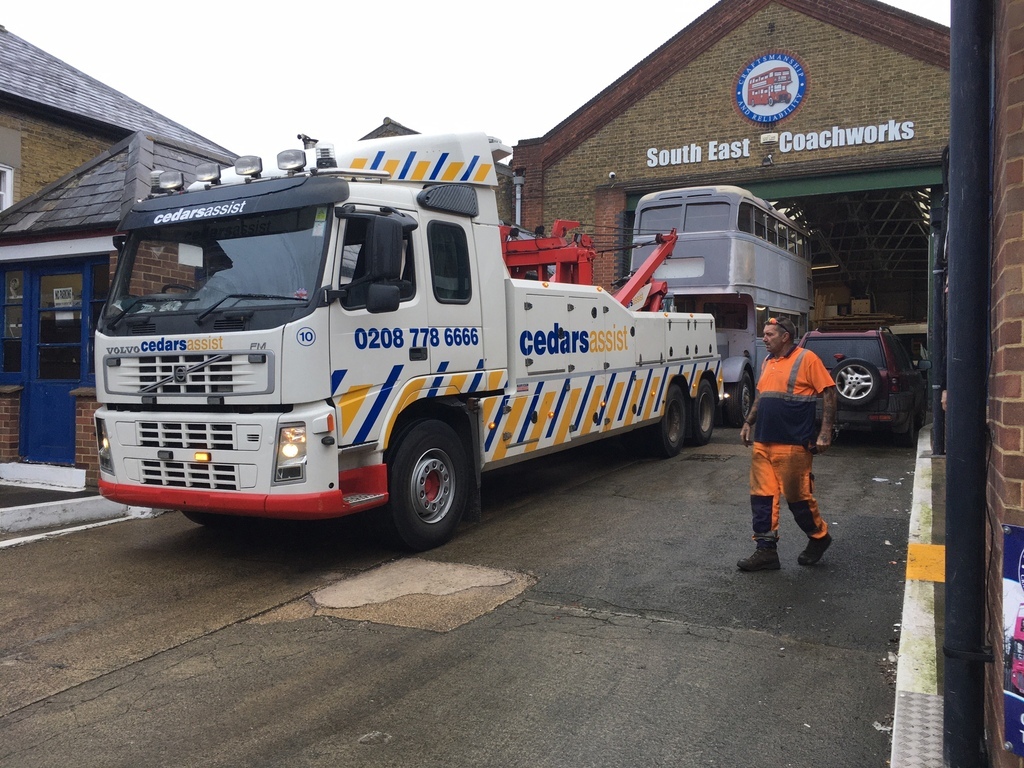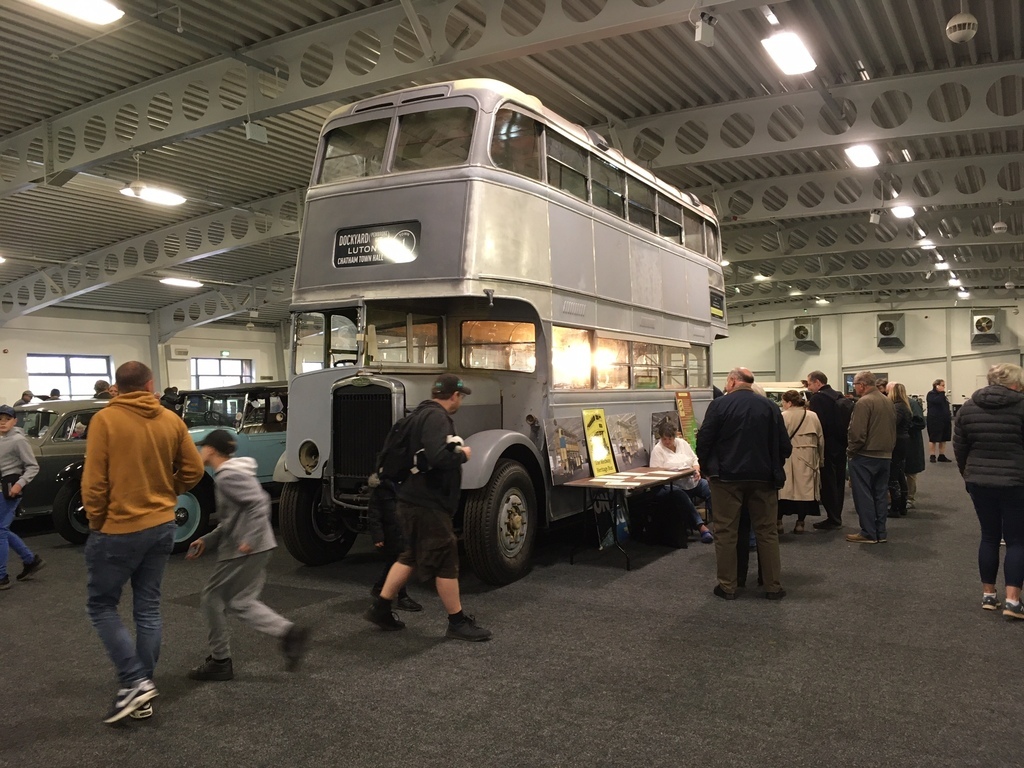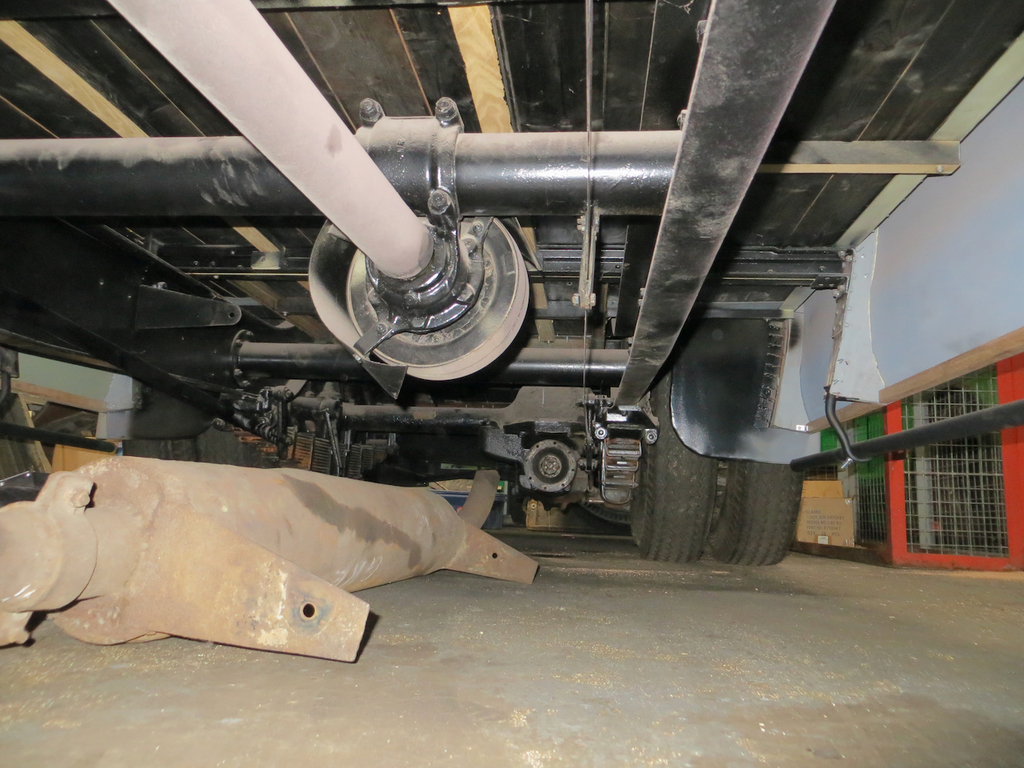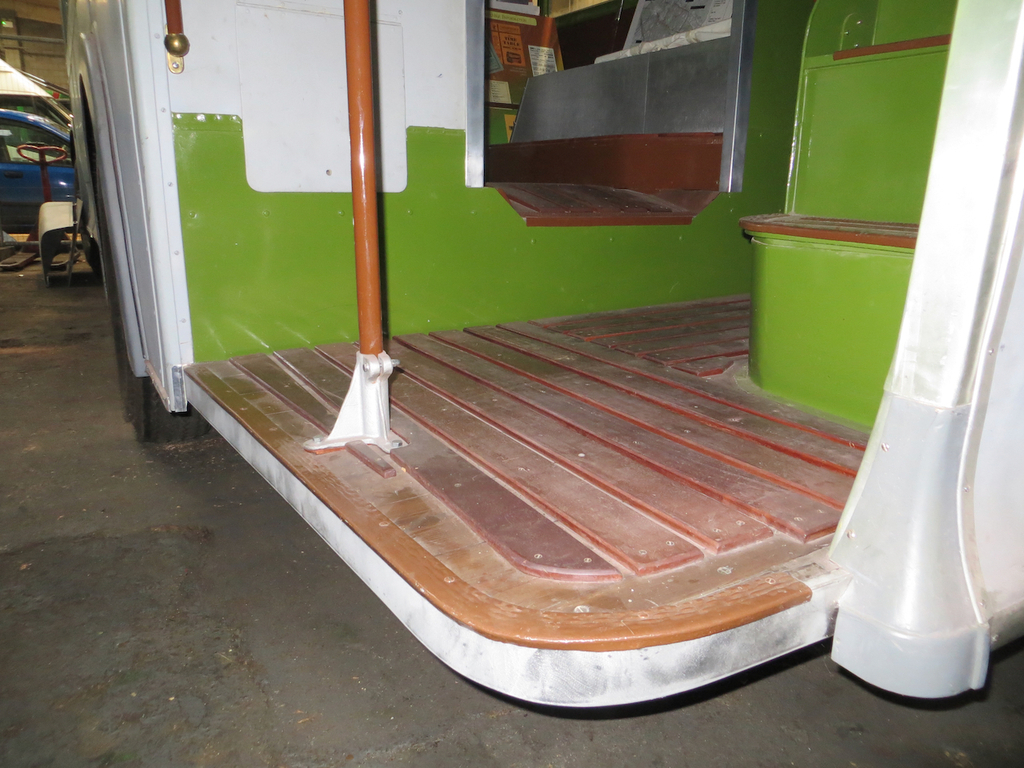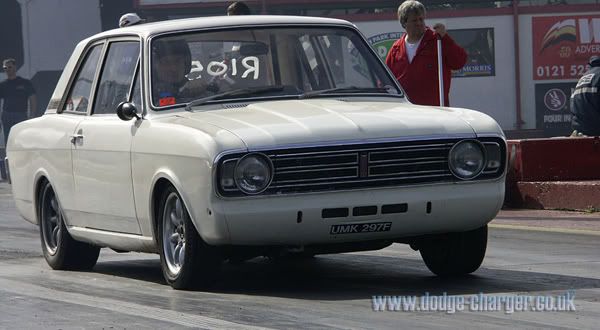Tell you what, working for a living is really tedious and soaks up a lot of valuable playing time. But I did sneak off for a day when Mrs Sweetpea wasn’t looking.
Anyway, what’s happened in bus land then?
As we previously said she’s moved from South Eastern Coachworks to a secret location near Maidstone. It’s not that secret. I’ll tell you more about the place when I learn more myself.
Here she is.

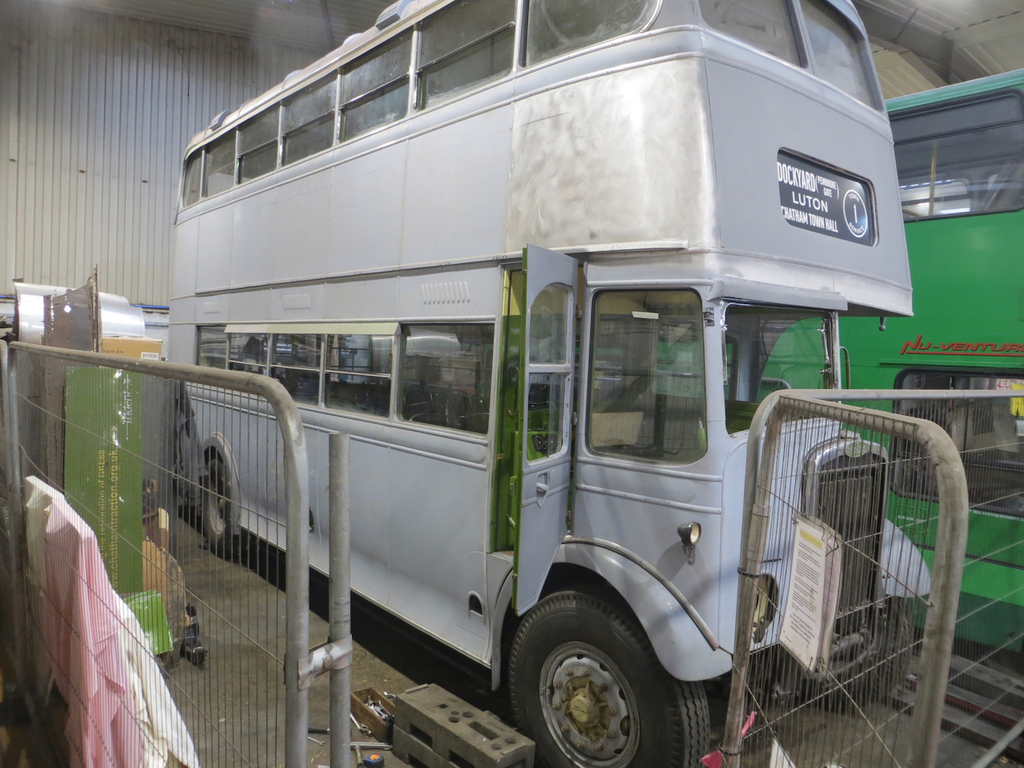
We keep her behind a fence because she’s a beast.
Or it might be because this is a working garage with moving vehicles, things up on lifts, and other potential ways of getting squashed, maimed, or otherwise killed. I think the fence is to keep us safe. Inside you can concentrate on what you are doing. As soon as you step through the gate you need your wits about you.
So what’s happened since I last saw her?
Well, all the windows are in. The interior paint is done. The seat frames are all in. Actually the bottom of the frames were in but now all the chromed seat tops are in. No cushions though. I did say in a previous post that it looked like the blind boxes were in. Those are the destination things that you can see above the cab in the photo above. But actually that’s just a vinyl sticker on the glass. The actual mechanisms aren’t fitted.
All the wood floors are down too. They may have been there when I last saw it to be honest. Looks really good though.


I don’t know if I said but Ian and I did have a go at getting the steering box out so it could be checked over. We failed because the cab floor was getting in the way so Ian (I guess) removed the floor, got the steering box out and gave it a check over.
First job then was to put the steering box and foot pedals back in.

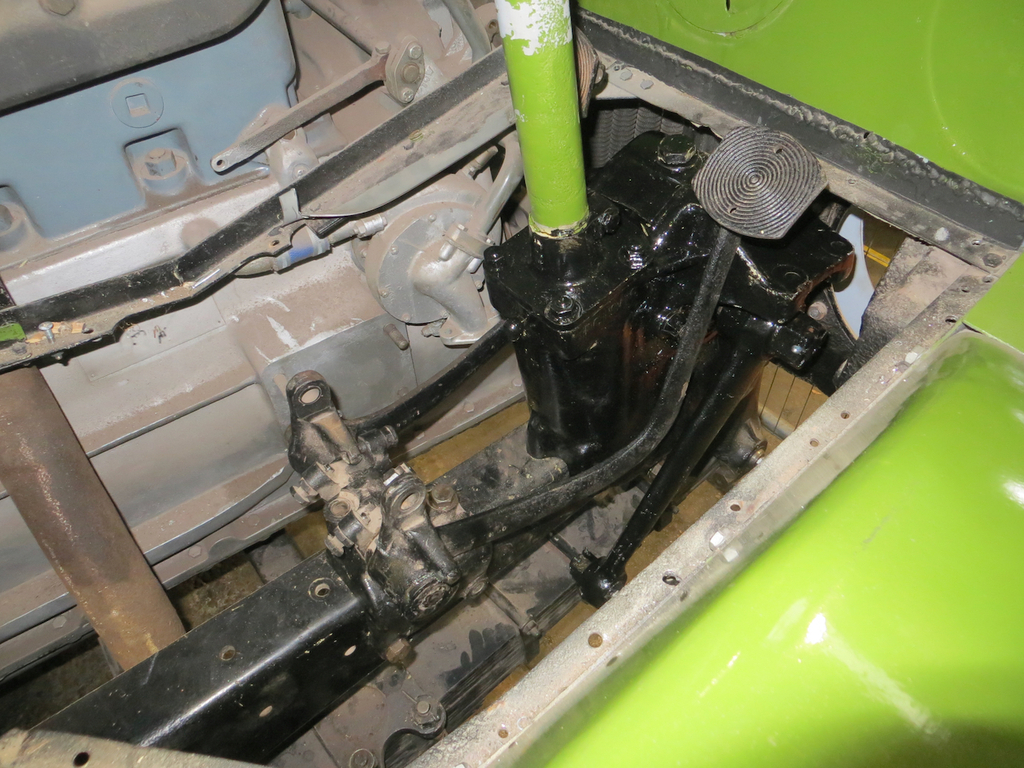
It transpires the steering isn’t adjustable for rake and reach! How did they manage? You wait until I tell you about the electric windows…
The steering box, pedals and handbrake all bolt to the frame rail. Steering at the front, pedals behind that and the handbrake will go immediately behind that.
It’s very neat and simple.
There is a drop arm off the steering box that connects to a drag link. That drag needs checking over so I got to take that off.


It has spring loaded seats for the ball joints on the ends and they need cleaning out and lubricating. I did have to ask if, when I undid the cap bolts, the spring would fire the drag link through the garage wall. Apparently it doesn’t.
Gearbox… In the pile of bits on the shelf was a u shaped steel bar that resembles a tow bar. That turned out to be the rear support for the gearbox.
I know what you are thinking… Wasn’t it a bit risky towing the old girl around Kent without the rear gearbox mount? Don’t you risk tearing the rubber in the engine mounts?
Well not really. The engine is bolted solidly into the chassis. There isn’t any rubber. The rear mount is a massive circular ring known as the banjo that is trapped between the back of the engine and the bell housing.
Anyway, we bolted the rear mount across the chassis.

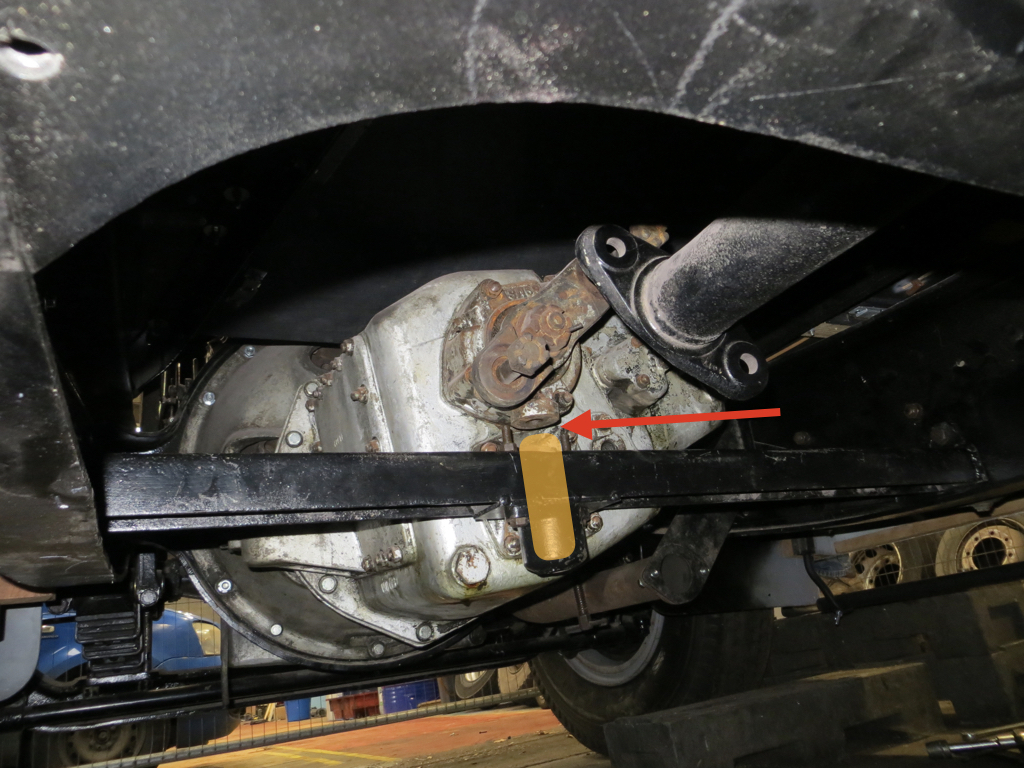
A sprung plunger should sit in that cup on the bottom of the cross member. I’ve marked it as that orange blob. The top pushes against that boss on the back of the gearbox but there should be a rubber buffer between the two. Roughly where that red arrow is pointing.
Needless to say the rubber doodah no longer exists and the manuals I have don’t show any of this.
Ian has taken the springy plunger thingy and reckons he can do something clever with a lump of rubbery stuff between the plunger and box and a bit of radiator hose to hold it in place.
As we mentioned the engine, have a photo of the drivers side while the cab panels are out.

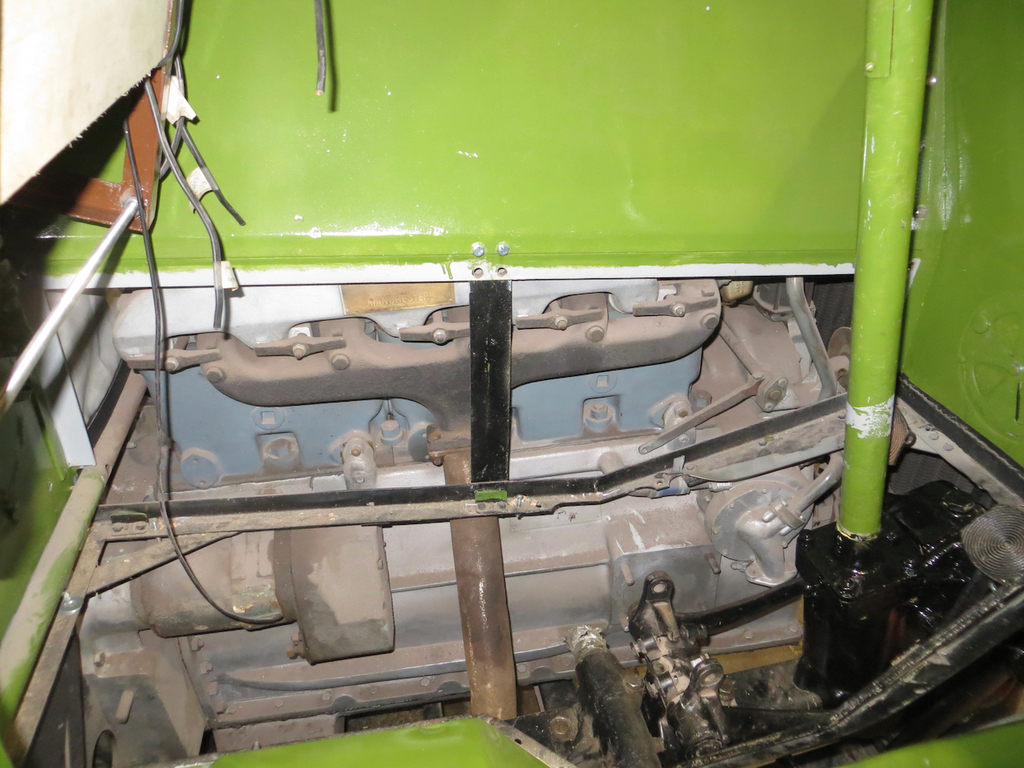
Being observant you will have noticed that the exhaust is right by the cab interior panels. The back of the panels would have had some asbestos shielding on it but all the same I expect it would have been unpleasantly hot in the summer. So I said so.
“Ian, this exhaust must have been unpleasantly hot in the summer.”
Apparently not. With the cab windows open it was generally fine. Even the windscreen opens on this thing. In fact the opposite was a problem. The diesels ran so much cooler than the earlier petrol engines that the drivers got cold in the winter. You understand that there was no heater in the cab. Or in the saloons for the passengers either. Heaters weren’t a thing for another, what, 15 or 20 years.
Apparently if you were alive in 1938 you were a tough soul, whether you wanted to be or not.
While I was taking pretty photos of the cab Ian was upside down on the other side of the engine fitting the dynamo.

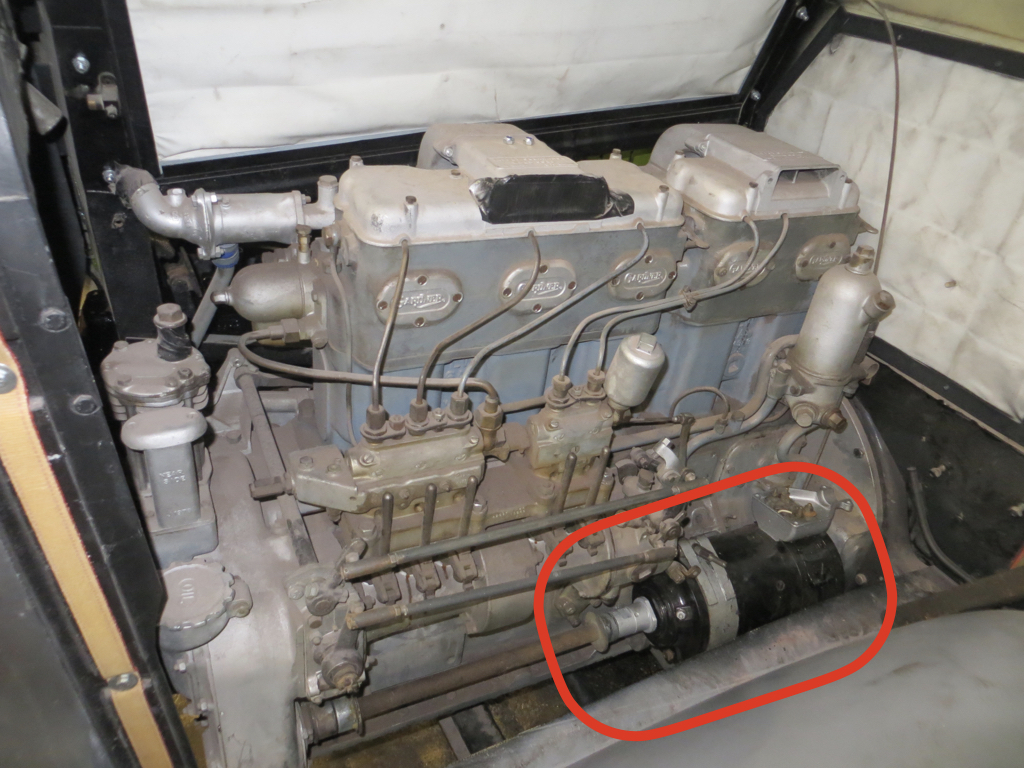
It’ll be the black thing I’ve ringed in red on the end of the auxiliary shaft.
What else do we need to discuss? Ah yes, the electric windows.
I didn’t take a photo because I didn’t know it was going to become part of the story but take a look at this photo from ages ago…


Normally this lower opening in the door would have a sliding window in it.
Well the glass has been fitted now. Basically the front third has fixed glass in and there seems to be no way to fit a slider. Curious. So I started searching old photos of GKE. Look at this of it in service.

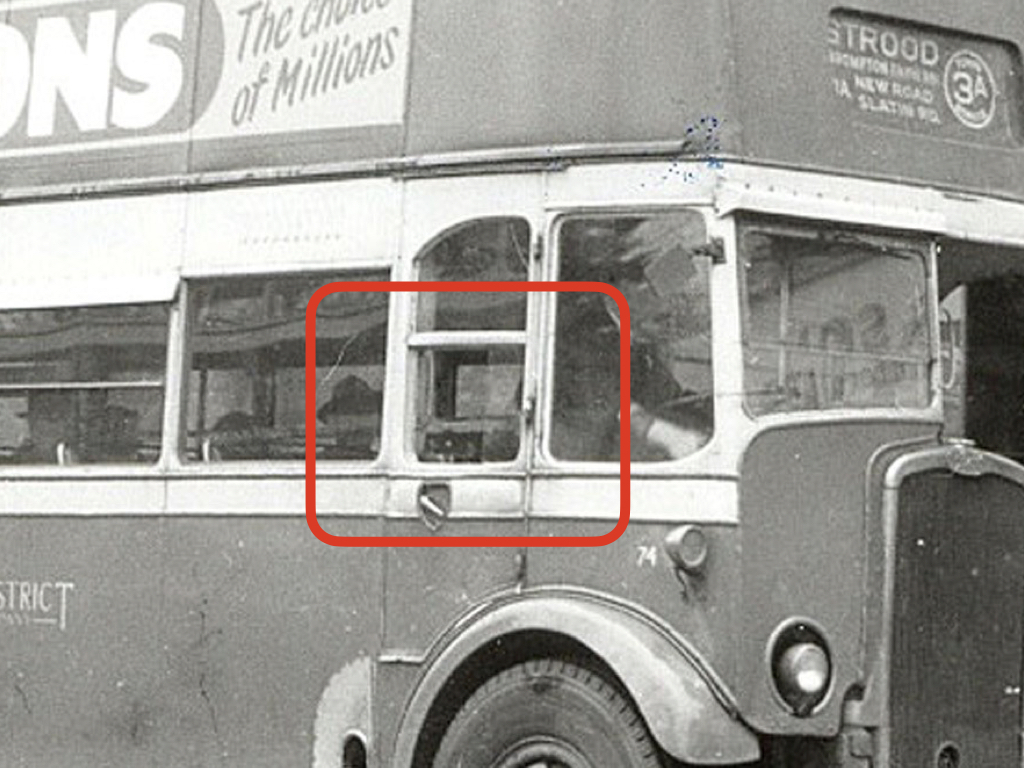
You can see reflections from the front third but the back section is oddly transparent. It’s as if there is no glass in it. And there are no handles for.a slider either.
So not only are the windows not electric but they appear to not have glass in either… Why would that be?
Well the other thing GKE is missing are indicators. So the driver would have had to use hand signals which means the slider would always have been open ‘cos the drivers arm was regularly out of it. So why bother fitting glass in a window that’s never closed?
Now that’s a scary thought… I’m going to have to ask about and see if it’s true.
Lastly I’ve scored a part to take home. To be strictly accurate, I did say I’d clean it up and take it back.

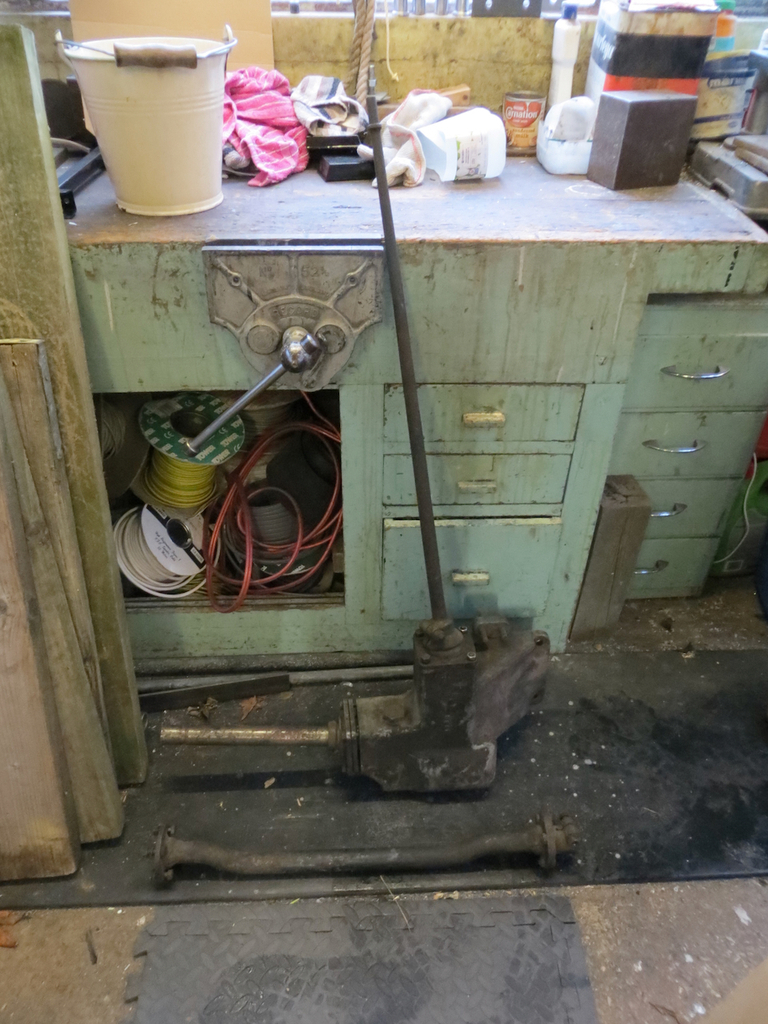
Anybody want to guess what it is?
James






